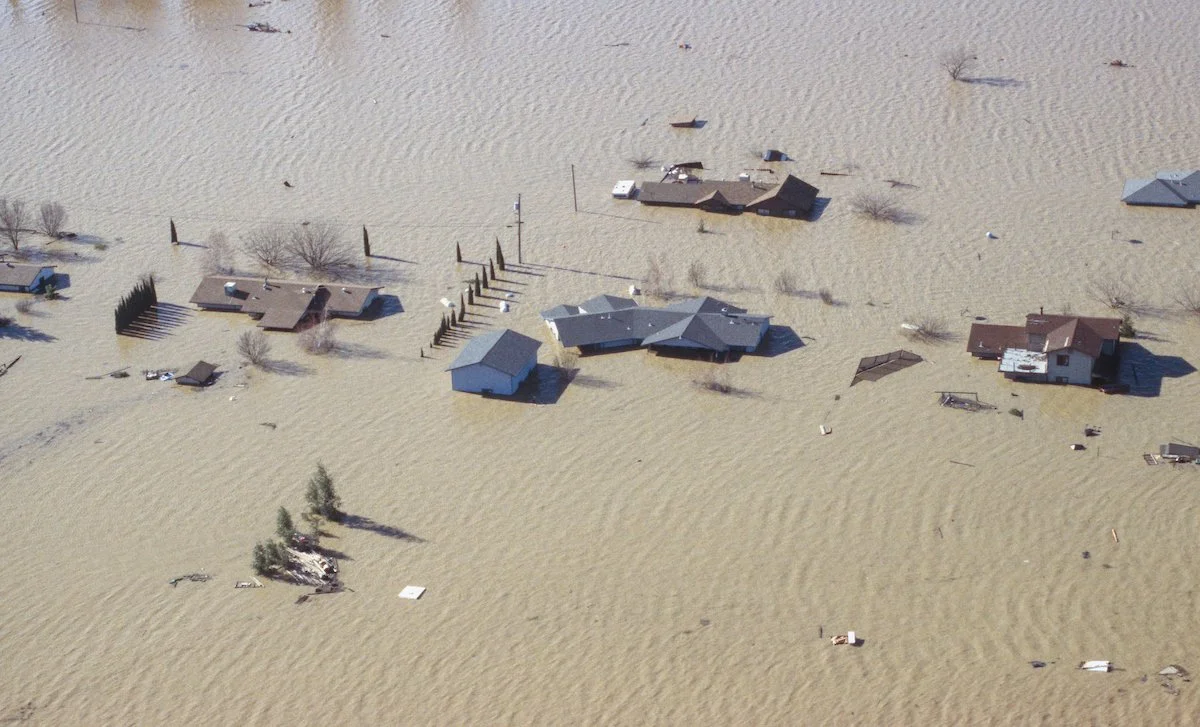Floodwater Management in the Yuba River Basin
1997 flooding in Yuba County. Credit: CA Dept. of Water Resources.
It had long been the worst of times.
The sand and gravels torn out of the Gold Rush Sierra had raised the Yuba River channel and increased flooding in the Yuba River Basin below. The resulting 19th century landmark court decision had effectively stopped hydraulic gold mining in California, but the industrial gold rush would and will continue to haunt the future for decades and indeed centuries.
The 20th century had not been kind either. Major levee breaks occurred on the Yuba levees in 1955, 1986, and 1997.
Choices had to be made.
They were made as a result of an unlikely confluence of events. In 1999, after more than a decade of work, the South Yuba River Citizens League and Friends of the River convinced the California legislature to add portions of the South Fork Yuba River to the state’s wild & scenic river system. The price, however, for Governor Davis’s signature was support for a comparatively modest state bond measure to provide state support for Yuba Basin flood infrastructure.
We made that commitment. We also agreed to participate in a Yuba-Feather Workgroup to work collaboratively with the Yuba County Water Agency on flood infrastructure.
What needed to be done was obvious. The levees had shaky construction histories. They needed to be rebuilt. The flood operation manuals were in bad need of updates. And the Agency’s big million-acre foot dam on the north fork of the Yuba did not have much flood space reserved or much ability to make space in the reservoir to sop up big flood flows predicted by weather forecasts to appear.
Over the subsequent decades, big investments were made in the Yuba and Feather River (and even Bear River) levees. Decades later, the first timid (but apparently real) steps to update the flood manuals are underway. And the Agency, first in an amended relicensing filing for its big New Bullards Bar Dam — and now in a proposed license amendment to the Federal Energy Regulatory Commission (FERC) — is requesting permission to construct an auxiliary spillway that can make earlier releases to prepare its reservoir to catch parts of predicted floods.
Friends of the River and other environmental groups interested in the Yuba Basin will be participants in the FERC proceeding and supporters in principle of the auxiliary spillway. Indeed, we have already offered comments to the Agency.
Progress is happening, but it does take decades of commitment.
Resources
Conservation Groups’ Comments on Ark Spillway Draft Environmental Documents | Draft License Amendment

